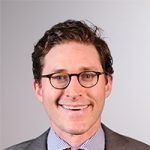Why the Nuclear Security Summits deserve to continue
By Michael H. Fuchs |
The news these days is full of reminders that civilian nuclear programs can pose serious security risks. In the wake of the Brussels terror attacks, Belgians are worried about the security of their country's nuclear installations. The Nuclear Threat Initiative reports that "nuclear facilities are not prepared for the growing cyber threat"—underscoring the danger that nuclear facilities could be vulnerable to acts of cyber-related sabotage or theft. And of course the 2011 accident at the Fukushima Daiichi nuclear power plant, which has rendered a significant area around the accident site uninhabitable for decades, provides an indication of what could occur if a nuclear facility's security were breached by malicious actors. These are but a few examples illustrating the myriad challenges the world faces in ensuring security for civilian nuclear programs.
So how, faced with so many challenges, should countries work together to address these multifaceted threats?
Part of the answer lies in one of the immutable rules of international affairs: If you want to make progress, organize a meeting. Meetings are action-forcing events in diplomacy; they force governments and bureaucracies to reach decisions on key issues. The gold standard, of course, is a meeting that involves heads of state. And if you can get heads of state to commit to attending more than one meeting on a particular issue, you've gained just about the highest level of political commitment that a country can provide, short of a legally binding agreement.
For these reasons, the Nuclear Security Summits—initiated in 2010 and held at the leader level every two years since—have represented a significant boost in the attention that the United States and other nations pay to preventing nuclear terrorism. The question is why the world should now abandon a summit process that has registered such significant progress in improving nuclear security.
Galvanizing progress. President Obama's 2009 Prague speech is remembered as a sweeping vision for working toward a world without nuclear weapons. But perhaps the speech's most tangible outcome arose from Obama's statement that "[W]e must ensure that terrorists never acquire a nuclear weapon. This is the most immediate and extreme threat to global security. … So today I am announcing a new international effort to secure all vulnerable nuclear material around the world within four years." The Nuclear Security Summits were born from this announcement.
The timeline for securing all vulnerable nuclear material has proven longer than the four years President Obama set as a goal. But the summits have galvanized progress toward securing nuclear materials in countries around the world. At the 2014 summit, for example, 12 nations jointly announced that they had eliminated highly enriched uranium from within their borders. The summits have also produced a set of efforts—to enhance, for example, the Global Initiative to Combat Nuclear Terrorism—that aim to strengthen international regimes protecting nuclear materials and preventing terrorists from obtaining them.
But even without taking into account the summits' specific outcomes, they have achieved one of their initial aims by inducing governments to focus attention at the highest level on nuclear security. They have maintained pressure on governments to take action. Without a summit process to focus attention, leaders rarely engage directly in the Nuclear Non-Proliferation Treaty or its affiliated processes, even though this framework governs much of the world's efforts to bolster nuclear security. The result is that seemingly mundane—but incredibly important—activities such as ensuring security at nuclear power plants is often missing from the agenda when leaders meet. The summit process changes this dynamic. It puts leaders in a room together every two years to discuss nothing but nuclear security.
Moreover, the summits are designed so that leaders who wish to be seen as contributors to global security get a high-profile opportunity to make commitments to the security of nuclear materials—and to do so before the leaders of many of the world's largest, most powerful countries. The summit system also pressures nations into making concrete commitments. Few leaders who attend summits will wish to invite criticism by taking no action while there.
But the beauty of the summit system—or part of it, in any case—is that the summits are not the United Nations or the International Atomic Energy Agency. Thus action at the summits does not require consensus, or settling for the lowest common denominator. The summit process does strive for national commitments through consensus communiqués, but it also employs the novel mechanisms of "house gifts"—through which countries can make unilateral commitments to nuclear security—and "gift baskets"—through which smaller groups of nations can make multilateral commitments. This flexibility has contributed a great deal to the summits' workability.
Continued engagement. The work of improving nuclear security is still far from done. This year's Nuclear Security Index, produced by the Nuclear Threat Initiative, makes clear that too many nuclear materials and facilities around the world remain vulnerable. The vulnerabilities include the risk of cyber attack and sabotage. Indeed, the Nuclear Security Index includes a new sabotage ranking which demonstrates that "many countries considering nuclear power are struggling to put in place the basic measures necessary to prevent an act of sabotage that could result in a radiological release similar in scale to the 2011 Fukushima disaster in Japan."
At the Washington summit concluding on April 1, a consensus document will reportedly be released regarding the future of the summit process. It envisions embedding the summits' work more firmly within five international institutions and partnerships: the United Nations, the International Atomic Energy Agency, Interpol, the Global Initiative to Combat Nuclear Terrorism, and the Global Partnership Against the Spread of Weapons and Materials of Mass Destruction. This makes sense. Political agreements reached at summits must be implemented, and the best way to monitor implementation is through the day-to-day work of existing institutions and partnerships.
But such immense challenges remain for nuclear security that the summit process should continue beyond President Obama's tenure. If nations are to continue making difficult commitments to prevent nuclear terrorism—if new action is to be galvanized while implementation of prior commitments is ensured—engagement at the leader level every two years still has a crucial role to play. No head of state can commit to regular summits on every important issue under the sun. But any head of state would be hard pressed to articulate why he or she can't dedicate a day, every two years, to rallying the world around preventing nuclear terrorism.
To end the summits now would be like stopping a race when you're in the lead. And nuclear security is not a race you want to lose.
















